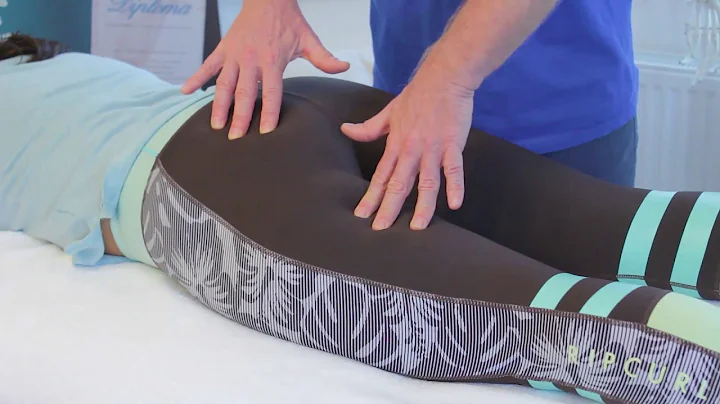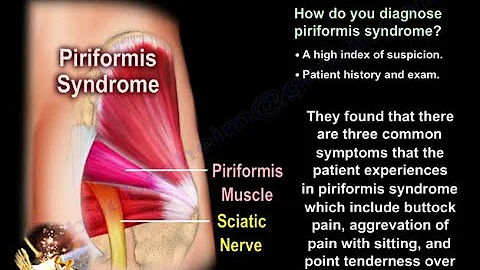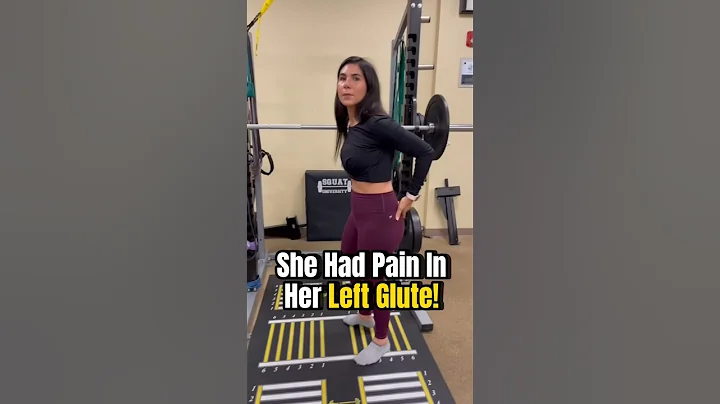osteomalacia is one of the main causes of knee osteoarthritis clinically, but because of its mild clinical symptoms, it is very easy to be overlooked, resulting in further aggravation of the disease, and eventually a severe knee Osteoarthritis, but in fact this is the critical period for the prevention and treatment of knee osteoarthritis. Today, I will talk to you about how to treat patellomalacia correctly.

Patella malacia
"Doctor, I feel sore and weak in my knees when I go up and down recently. Is it knee osteoarthritis?" Yes, but my knees have been sore for several days after climbing the mountain recently. Is there osteoarthritis?"
In clinical practice, many people have heard of knee osteoarthritis, but few have heard of patellar softening. In fact, is an early stage of knee osteoarthritis . The essence of is that the cartilage in the knee joint has suffered swelling, erosion, cracking and swelling after decades of exercise and friction. Fragmentation, shedding, and lastly the femur cartilage also undergoes the same pathological changes. The osteoarthropathy , which forms the patellofemoral joint, is one of the important factors that cause middle and late knee osteoarthritis.
However, the initial clinical symptoms of patellomalacia are mild,It only manifests as pain under the patella, which is relieved after a little exercise, and then aggravated after a long period of exercise, and disappears after a rest, so it is often overlooked . However, with the aggravation of symptoms, knee pain will gradually prolong, so that it cannot squat, it is difficult to go up and down the stairs or suddenly weak and fall. This has developed into the middle stage of knee osteoarthritis, is therefore in the early stage Taking preventive measures to improve the health of the knee joint in time is the most critical.
What is patella malacia

Knee joint
Patella is what we often call kneecap, it is a piece of sesamoid formed in the quadriceps tendon, its main function is strong13span. It conducts and strengthens the function of the quadriceps, and helps maintain the stability of the knee joint and protect the knee joint.

patella cartilage
Patella cartilage is a layer of cartilage between the patella and the femur. Its function is to cushion the friction between the patella and the femur , but as the knee joint continues to flex and extend, As a result, the patellar cartilage is constantly rubbed and depleted, and eventually a series of chronic degenerative diseases such as swelling, cracking, and fragmentation of the patellar cartilage surface are caused. This is the so-called patellar softening.
How to diagnose patellomalacia
The diagnosis of patellomalacia is mainly based on clinical symptoms combined with imaging reports, and the clinical manifestations and examination results of patellomalacia in different periods are different.
①Initial patellomalacia

The initial symptoms of patellomalacia are mild
In the early stage, the main manifestation is pain under the patella.It relieved after a little exercise, and then worsened after a long exercise, and gradually disappeared after a rest, but there was no obvious obstacle to the activities of going up and down, squatting up, and it was only manifested as joint snapping, and the X-ray of initial patellomalacia There is nothing unusual.
②Medium patellomalacia

The knee joint pain is significantly worse in the middle term
Accompanied by the aggravation of the patellar cartilage damage, the patient's pain during the up and down, squatting and squatting activities is obvious, and the rest is relieved. It is not obvious, and the sound of joints has also increased significantly. The "click, click" joint friction sound can be accompanied by every knee flexion and extension. This is the MR of the knee joint. The abrasion and edema of the patellar cartilage can be clearly seen, or structural changes in the knee joint can be seen.
③Advanced patellomalacia

Complete knee deformity
Late patellar softening is not only limited to the patella cartilage, but the pathological changes of the entire knee joint. At that time, the knee joint will be painful and uncomfortable regardless of whether it is moving or not, and all activities will be obviously restricted. At this time, it can be said that the knee joint has completely lost its normal physiological function, and it is accompanied by secondary synovitis and joint effusion span3span. The imaging report at this time showed obvious hyperplasia and stenosis of the knee joint, and may be accompanied by edema and injury of meniscus and cruciate ligament .
Self-detection method for patellomalacia
Many people have had knee joint pain when going up and down, squatting or climbing, accompanied by joint "click, click" sound.It’s called . It’s a simple way for everyone to diagnose whether your patellar cartilage has pathological changes, and to what extent it is damaged. This test is called the patella squeeze test .

Patella squeeze test
Specific operation method: Put a small towel on the popliteal socket to make the knee joint cushion slightly flexed, put the right hand on the top of the patella and press down to the femoral trochlear. At the same time, rotate the patella to grind the patella. If the friction under the patella can be heard and sound is accompanied by pain symptoms, this is a positive patellar grinding test, which is one of the signs of patellar softening. If there is a positive result, it indicates that the patellar cartilage is obviously damaged. At this time, rest and non-drug treatment can not achieve obvious results, and further drugs or minimally invasive interventional treatment are needed.
Clinical treatment of patella softening the main purpose.
①Glucosamine

Glucosamine
Glucosamine is the main drug for the treatment of patellomalacia. It is a substance synthesized in the human body and an important nutrient for the formation of chondrocytes. It is a healthy articular cartilage 's natural tissue component, For early and mid-term patellomalacia, proper oral glucosamine can reduce inflammation and reduce cartilage tissue damage.
②Non-steroidal anti-inflammatory drugs

Celecoxib
Celecoxib, Voltaren and other non-steroidal anti-inflammatory drugs are the main drugs for the treatment of middle and late stages of patellar softening one,The main purpose of is to relieve joint pain, but these painkillers do not reduce cartilage damage, so they are often combined with glucosamine .
③ sodium hyaluronate joint cavity injection

sodium hyaluronate knee injection
sodium hyaluronate is mucopolysaccharide and the main component of joint fluid, hyaluronic acid After sodium injection in the joint cavity, it increases the lubrication of the joints, restores the normal elasticity of joint fluid, activates the self-repair process of cartilage tissue, inhibits the decomposition of cartilage matrix, can increase the aggregation of proteoglycan, and induce endogenous The production of sodium hyaluronate also has the effects of anti-inflammatory and blocking pain receptors.
④Surgery treatment

Knee arthroscopy
For patients with advanced patellomalacia, surgical treatment is the main method, Among them, knee arthroscopy is the most commonly used , which can be the smallest In the wound, use the planer to cut the degenerated cartilage to the normal part of the cartilage, so that the patellar cartilage will slowly regenerate endogenously, and the regenerated cartilage is hyaline cartilage.
How to relieve patellomalacia usually
In the early stage of patellomalacia, knee flexion and extension, weight-bearing activities should be reduced, and appropriate functional exercises can significantly alleviate clinical symptoms, and can effectively alleviate symptoms ,Here are a few joint activities to introduce to you, but it needs to be emphasized that it is not recommended for patients with acute pain and middle and late stages of patellomalacia.
①Reduce the weight-bearing activity of the knee joint
People with weak knee joints and joint friction should pay attention to reducing their activities, especially to reduce the exercises such as climbing stairs and hills. At the same time, pay attention to the warmth of the knee joint. This is recommended People in the situation change the toilet at home to a squatting toilet, which can reduce the damage to the knee joint.
②Walking aids can be used appropriately

crutches
For people with obvious knee joint pain and severe joint mobility, can use crutches, wheelchairs and other walking aids to relieve the knee joint. Of the weight.
③Perform appropriate lower limb non-weight-bearing exercise
1, quadriceps isometric contraction

quadriceps isometric contraction
_p6 supine_p6 patient The lower limbs try to extend the knees and press hard on the bed surface, and you can feel the thigh muscles tighten, hold it for 15 seconds and relax, repeat 10-15 times.
2. Ball-clamping training

Ball-clamping training
In the sitting position of the patient, clamp a ball on the inner side of the two thighs and gradually clamp it to the maximum extent that one can bear. Hold for 15 seconds and relax and repeat 10-15 times.
3. Straight leg elevation exercise

Straight leg elevation exercise
The patient lies on his back,Straighten your legs together, then lift your heels about 30cm away from the bed surface, hold for 15 seconds, then rest, repeat 10-15 times.
Summary
Patellar osteomalacia is one of the main causes of knee osteoarthritis. Because the initial symptoms are relatively mild, it is very easy to be ignored, so timely diagnosis and treatment are very necessary, especially in the early stage Active treatment can effectively alleviate the development of the disease and maintain the movement function of the knee joint.
The picture is from the Internet, invaded and deleted
Thank you for reading. If you think this article is helpful to you, please like or bookmark it. If your family and friends also have related questions, please share this article Give it to them, thank you. If you want to get more health knowledge, pay attention to Xiaowu’s headline number- Xiaowu’s health science station , pay attention early, don’t get lost
.










